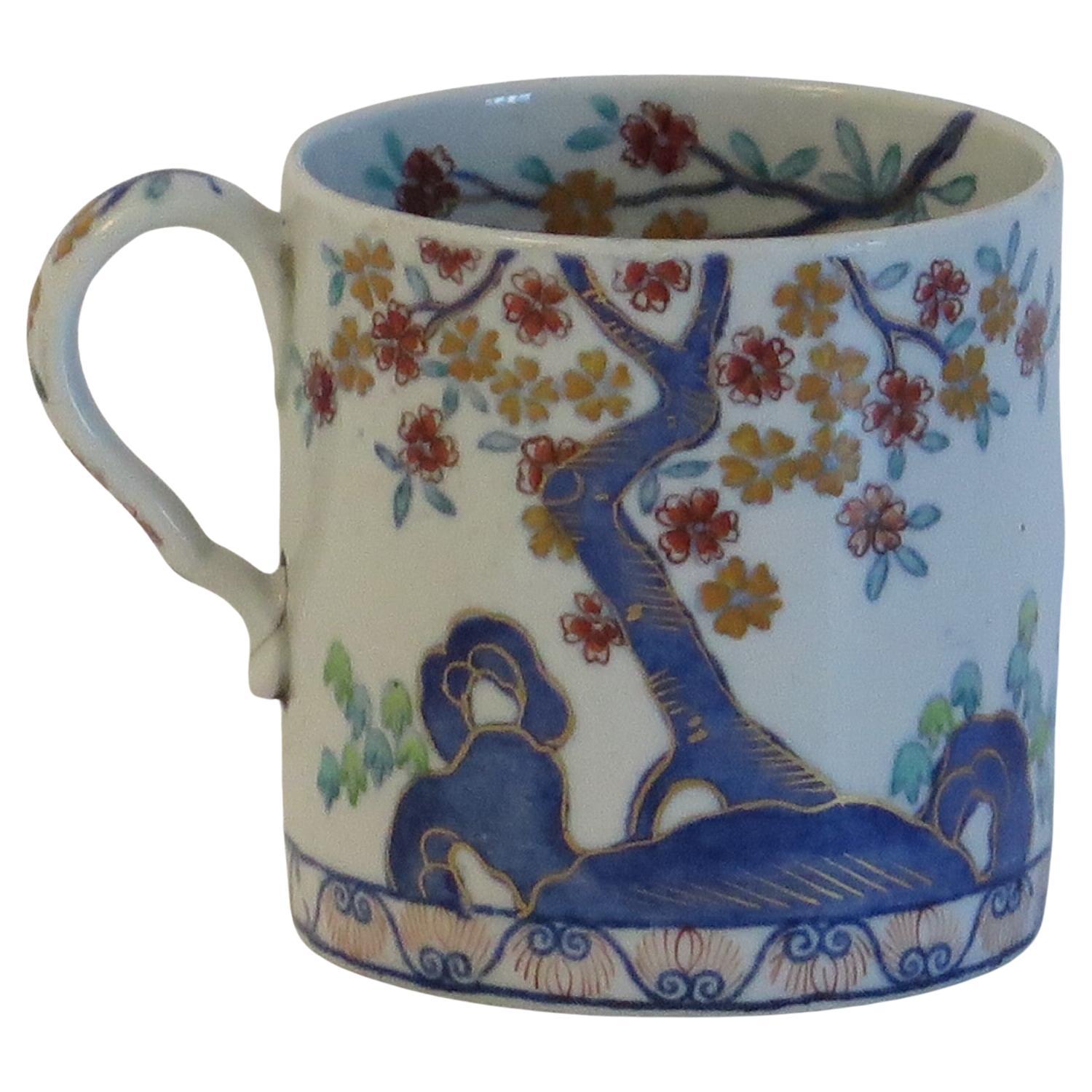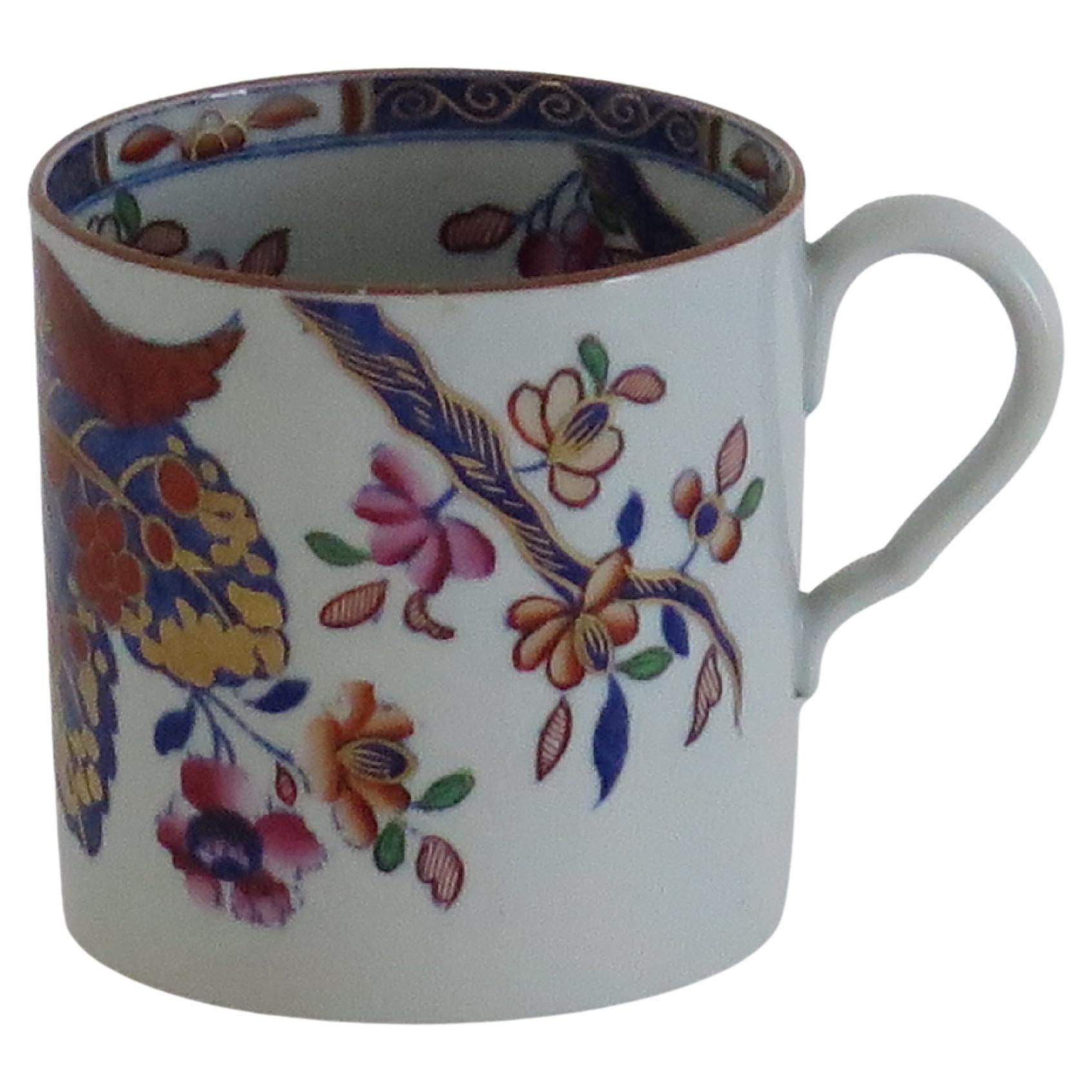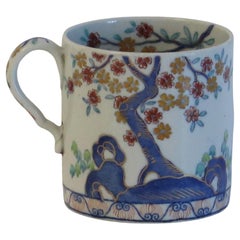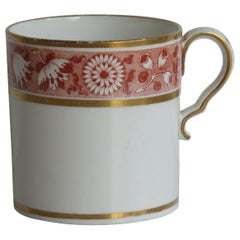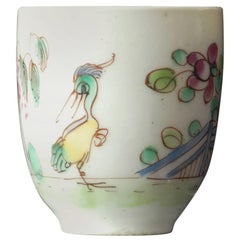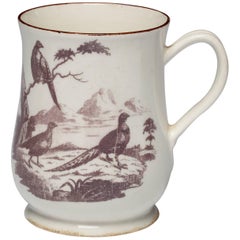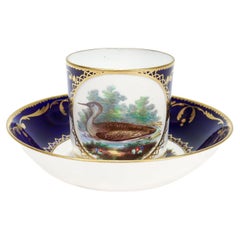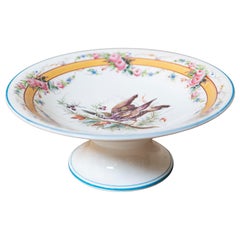Items Similar to Georgian Spode Porcelain Coffee Can Bat Printed Game Birds Pattern, circa 1810
Video Loading
Want more images or videos?
Request additional images or videos from the seller
1 of 18
Georgian Spode Porcelain Coffee Can Bat Printed Game Birds Pattern, circa 1810
$204.83
$408.2849% Off
£148
£29549% Off
€175.01
€348.8449% Off
CA$280.37
CA$558.8449% Off
A$314.03
A$625.9449% Off
CHF 163.40
CHF 325.6949% Off
MX$3,813.85
MX$7,601.9449% Off
NOK 2,071.49
NOK 4,128.9849% Off
SEK 1,954.60
SEK 3,89649% Off
DKK 1,305.83
DKK 2,602.8349% Off
Shipping
Retrieving quote...The 1stDibs Promise:
Authenticity Guarantee,
Money-Back Guarantee,
24-Hour Cancellation
About the Item
This is a very good example of an English George III period, porcelain, coffee can, made by Spode, England in the early 19th century, circa 1810.
The can is nominally straight sided and has the Spode loop handle with a pronounced kick or kink to the lower part, with a lower attachment that curves out slightly from the cup. Spode is the only factory with a handle of this exact shape.
The can is decorated with one of their grey "bat printed" designs, showing game birds collected after the shoot. It also has hand painted gilded detail to both rims and the handle.
Similar Spode bat printed coffee cans are illustrated on page 25 in Steven Smith's book "Spode and Copeland," published by Schiffer.
This can is unmarked to the base as was often the case but this is definitely by Spode.
Overall a fine George 111rd coffee can having a very decorative pattern in lovely condition.
- Attributed to:Spode (Manufacturer)
- Dimensions:Height: 2.44 in (6.2 cm)Width: 3.44 in (8.74 cm)Depth: 2.61 in (6.63 cm)
- Style:Georgian (Of the Period)
- Materials and Techniques:Porcelain,Glazed
- Place of Origin:
- Period:
- Date of Manufacture:circa 1810
- Condition:Wear consistent with age and use. Very Good antique condition- Please see images. Gilding good with little wear. NO Cracks, NO Chips, NO Restoration.
- Seller Location:Lincoln, GB
- Reference Number:Seller: P 14391stDibs: LU990319157262
About the Seller
5.0
Platinum Seller
Premium sellers with a 4.7+ rating and 24-hour response times
Established in 1993
1stDibs seller since 2013
1,390 sales on 1stDibs
Typical response time: <1 hour
Associations
LAPADA - The Association of Arts & Antiques Dealers
- ShippingRetrieving quote...Shipping from: Lincoln, United Kingdom
- Return Policy
Authenticity Guarantee
In the unlikely event there’s an issue with an item’s authenticity, contact us within 1 year for a full refund. DetailsMoney-Back Guarantee
If your item is not as described, is damaged in transit, or does not arrive, contact us within 7 days for a full refund. Details24-Hour Cancellation
You have a 24-hour grace period in which to reconsider your purchase, with no questions asked.Vetted Professional Sellers
Our world-class sellers must adhere to strict standards for service and quality, maintaining the integrity of our listings.Price-Match Guarantee
If you find that a seller listed the same item for a lower price elsewhere, we’ll match it.Trusted Global Delivery
Our best-in-class carrier network provides specialized shipping options worldwide, including custom delivery.More From This Seller
View AllGeorgian Spode Coffee Can Ironstone Kackiemon Pattern 2117, circa 1820
By Spode
Located in Lincoln, Lincolnshire
This is a good stone China (Ironstone) coffee can made by the SPODE factory in the early 19th Century, circa 1820.
The coffee can is well potted with cylindrical shape and a loop handle with the distinctive Spode kink to it. The piece is beautifully decorated with hand painted enamels in the chinoiserie Kakiemon style, pattern number 2117.
It has the Spode Stone China blue printed...
Category
Antique Early 19th Century English Georgian Ceramics
Materials
Ironstone
$215 Sale Price
60% Off
Georgian Spode Stone China Coffee Can (C)Tobacco Leaf Pattern 2061, circa 1820
By Spode
Located in Lincoln, Lincolnshire
This is a very good stone China (Ironstone) coffee can hand painted in the tobacco leaf pattern, number 2061, made by the Spode factory in the early 19th century, English Georgian pe...
Category
Antique Early 19th Century English Chinoiserie Ceramics
Materials
Ironstone
$199 Sale Price
44% Off
Early Davenport Ironstone Mug Hand Painted Chinoiserie Pattern 659, circa 1815
By Davenport Porcelain
Located in Lincoln, Lincolnshire
This is a rare and early stone China (Ironstone) mug which dates to the George 111 period, circa 1815 made by the Davenport factory of Longport, Staffordshire Potteries, England.
The mug is straight sided similar to a coffee can and has a loop handle with an upper thumb rest.
The pattern is number "659", which is one of Davenport's very few chinoiserie patterns.
The bold pattern features striking polychrome enamels of rocks and different flowers all in the Chinoiserie style, hand painted over-glaze in different colours over an under-glaze blue printed outline. The pattern is embellished with good hand gilding. There is also a deep border pattern to the inside rim which replicates the outer mug pattern with sprigs of hand painted flowers.
The mark on the base of the mug is Godden's 1183, a blue printed DAVENPORT STONE CHINA...
Category
Antique Early 19th Century English Georgian Ceramics
Materials
Ironstone
$260 Sale Price
42% Off
Georgian Spode Coffee Can Porcelain Floral Leaf Gilded Pattern, circa 1810
By Spode
Located in Lincoln, Lincolnshire
This is a good quality porcelain coffee can that we attribute to Spode of Staffordshire, England, made during the very early 19th century, George 111rd period, circa 1810.
The coffee can is nominally parallel, with a loop handle having one lower kink, characteristic of the Spode handle. It has a fairly deep foot recess with obtuse corners and is unmarked to the base.
The pattern is one of Spode's transfer printed floral leaf designs in a burnt orange colour around the upper border, all between gold gilt rings with a further gold gilt ring just above the base and hand gilding to the outer handle.
We date this piece to the late George third...
Category
Antique Early 19th Century English George III Ceramics
Materials
Porcelain
$166 Sale Price
55% Off
Georgian Spode Stone China Coffee Can (A)Tobacco Leaf Pattern 2061, circa 1820
By Spode
Located in Lincoln, Lincolnshire
This is a very good stone China (Ironstone) coffee can hand painted in the tobacco leaf pattern, number 2061, made by the Spode factory in the early 19th century, English Georgian period, circa 1820.
This coffee can or cup made from Ironstone China is beautifully decorated with hand painted enamels in the very distinctive tobacco leaf pattern, pattern number 2061. The decoration also has very good hand gilded detailing. The upper rim has a dark ochre brown hand painted finish in the manner of 18th C...
Category
Antique Early 19th Century English Chinoiserie Ceramics
Materials
Ironstone
$215 Sale Price
40% Off
Fine Georgian period Minton Porcelain Coffee Can Pattern 641, Circa 1805
By Minton
Located in Lincoln, Lincolnshire
This is a finely painted porcelain coffee can made by the Minton factory, England, in the reign of George 111 in the early 19th century, circa 1805
Straight sided coffee cans wer...
Category
Antique Early 19th Century English George III Ceramics
Materials
Porcelain
$276 Sale Price
61% Off
You May Also Like
Coffee Can, Polychrome "Strutting Bird", Bow Porcelain, circa 1752
By Bow Porcelain
Located in Melbourne, Victoria
An early coffee can from the bow porcelain factory, naively painted with the ‘Strutting Bird’ pattern.
Category
Antique Mid-18th Century English Chinoiserie Porcelain
Materials
Porcelain
$2,160 Sale Price
20% Off
Tankard with Printed Decoration, Bow Porcelain Factory, circa 1758
By Bow Porcelain
Located in Melbourne, Victoria
Pint mug, in baluster form, decorated with early transfer prints of pheasants and two sheep. Transfer printing on bow porcelain is very rare.
Prov: Taylor Coll; Winifred Williams,...
Category
Antique Mid-18th Century English Neoclassical Porcelain
Materials
Porcelain
$2,940 Sale Price
30% Off
Antique Spode Porcelain Hand Painted Ornithological Duck Cup & Saucer
By Spode
Located in Philadelphia, PA
A fine antique English Georgian hand painted porcelain cup & saucer.
By Spode.
Pattern no. 1803.
Both cup and saucer with wide cobalt blue bands on a white ground, hand painted scenes with ducks in round cartouches, and gilt embellishments throughout.
The cup with a 'Diver' duck in a stream and the saucer with a 'Red Headed Merganser' on a bank.
The reverses marked for Spode, 1803, 'Diver', and 'Red Headed Merganser'.
Simply a wonderful antique Spode cup...
Category
Antique Early 19th Century British Neoclassical Porcelain
Materials
Porcelain
Early 20th French, Hand-Painted Porcelain Compote with Birds and Floral Motif
Located in Atlanta, GA
A beautifully hand-painted porcelain compote dish featuring an elegant pedestal form and richly detailed decoration. The interior showcases a pair of birds perched among delicate fol...
Category
Early 20th Century French Porcelain
Materials
Porcelain, Paint
1920s English Porcelain Pitcher Decorated with Birds and Bamboo
Located in Marbella, ES
1920s English Porcelain Pitcher Decorated with Birds and Bamboo.
Category
Early 20th Century English Serving Pieces
Materials
Porcelain
Meissen Porcelain Rothschild Pattern Birds Set of Cup And Saucer
By Meissen Porcelain
Located in Guaynabo, PR
This is a hand painted Meissen porcelain cup and saucer. It is featuring the Rothschild pattern birds with some insects and butterflies. The cup as ...
Category
Early 20th Century German Art Nouveau Porcelain
Materials
Porcelain
$600 Sale Price / set
20% Off
More Ways To Browse
Antique Coffee Can
Antique Coffee Cans
Spode England
Antique Spode Patterns
Spode Hand Painted
English Porcelain Birds
English Porcelain Cups
Copeland Spode
1810 Cup
Copeland England Spode
Antique Copeland Spode
Antique English Porcelain Spode
Antique Porcelain Coffee Cans
Antique Copeland Spode Patterns
Antique Bat Print
Bat Porcelain
Spode Bird
Spode Copeland Birds
